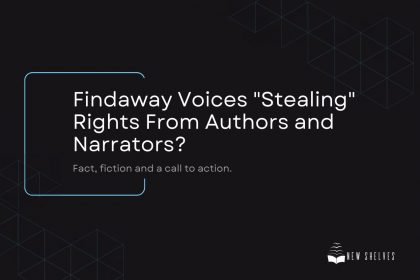
Let me start with a confession: I’m weak. When I learn of a new software solution that promises to save me time and sounds easy to use, I can’t resist taking it for a spin. The industry attempts to dress up consumers like me, by calling us ‘early adopters,’ but I know what they mean. I am and always have been a technology junkie.
I’ll never forget my first dealer. In 1971, Texas Instruments introduced to the public a gadget so outlandish it could add, subtract, multiply AND divide. The hit to my ego from being the first in my neighborhood to own a personal electronic calculator was worth the hefty price of $149, and I still recall the faces of my incredulous colleagues in the Teachers’ Lounge, as they witnessed me effortlessly average my students’ semester grades.
Jumping in early isn’t always pretty. A decade later, I bought and quickly ditched one of IBM’s first personal computers (and its dot matrix printer!) after acknowledging I would not live long enough to learn DOS.
For the bulk of my adult career, I was an ad guy. It was a perfect fit for a tech junkie, because in every shop I worked, the digital toolboxes were arsenals of applications. While I still use Adobe Suite and a few of the other giants for projects that require heavy lifting, for my needs as an indie author, I prefer newer, less bulky applications for their simplicity and ease of use. I’d like to share a few with you here.
Novels aren’t normal documents.
I think it’s a given that most authors use Microsoft Word to compose their manuscripts. I use the application for my novels, too, but not in the way you may think. My manuscripts don’t go near Word until I’ve finished writing them. I’ll explain.
To pen anything other than an email, I’ve always used Word. But in spite of its staggering features, writing my first novel revealed its limitations, and along the way I hit a wall. As my manuscript approached twenty thousand words, navigating the document became cumbersome. At sixty thousand I was spending as much time scrolling as writing, and I grew weary of the inefficiencies of slogging back and forth to search for something I wanted to tweak or move. I’m convinced I could have finished The Dead of Winter in half the time had I known about Scrivener, the program I used for my next three novels.
Scrivener is designed specifically for long writing projects, such as books and screenplays, and its powerful organizational tools make it ideal for authors, no matter their writing style. Whether you fuss with details and structure or forge on ahead, Scrivener lets you write in any order and assemble later.
My preference is to follow an outline, and with this program I can set up a three-act structure with twenty-seven chapters in minutes. Before I begin writing, I can sketch out and label the chapters to guide me through my planned story arc and remind me where I am. And, since characters often like to direct the action, Scrivener makes it simple to drag a scene that once worked in Chapter Seven and drop it in Chapter Twelve, where it makes more sense.
Like many powerful programs, Scrivener is not easy to use without instruction, but video tutorials are plentiful and free. As of this writing, Scrivener at is still inexpensive at $49. Visit http://www.literatureandlatte.com/scrivener/overview to learn more.
When I’ve completed writing my novel in Scrivener, I export the manuscript to Word for robust editing, which I explain next.
It takes more than a spell checker to strengthen and polish a masterpiece.
I’m not here to dispute the value of a real live editor or proofreader. Instead, I encourage you to check out two reasonably priced editing applications that are easy to use and can make dramatic improvements to your manuscript, whether or not you later choose to send it to a human.
In addition to providing a comprehensive spelling and grammar check, AutoCrit and ProWritingAid scour your text and provide recommendations for strengthening and polishing your writing in over 20 areas, (ProWritingAid offers 25).
Both identify repetitive words and phrases and call out overused dialogue tags and pesky adverbs, but they do much more. Each one tackles pacing and momentum by analyzing sentence and paragraph length to help keep you from boring your readers and pinpoints areas where you might be losing them. Both suggest areas where showing might be better than telling. As you might expect, the use of passive voice doesn’t stand a chance against these two.
It’s important to understand that you are still in charge of your work, and you’re not in danger of losing your voice. These programs simple highlight what they see as potential pitfalls. You decide how to use the information.
The brains behind AutoCrit designed their program specifically for fiction, and the analysis compares your work to other published works in your genre.
ProWritingAid claims over a million authors, editors and other users, and is not limited to fiction. You have probably encountered the platform in the form of those edit suggestions you can’t avoid when filling out forms online, but don’t hold those annoying intrusions against them. The full program I advocate is enlightening.
At the time of this writing, ProWritingAid costs $79 per year. Autocrit has both an adequate free version, as well as paid premium versions which offer more thorough analyses and online courses.
It’s time for another confession: I use them both.
Help, I’m not a graphic artist!
For many indie authors the nightmare scenario begins like this. The process was daunting, but you’ve just published a book and you’re feeling accomplished, even euphoric. Before you’ve had time to bask in the glory, you learn that no one will see your masterpiece unless you have visibility on social media, and to achieve that presence, you need to run frequent posts and ads.
Creating them sounds overwhelming, and then it gets worse. Facebook, Instagram and Twitter need you to upload something called a header for your page. Oh, and each platform requires a different format and size, both for the headers and for the posts. It’s enough to rethink your marketing strategy and ask your family and friends to buy a second or third book.
Fortunately, smart people had the good sense to invent BookBrush and Canva, two applications that help you design high quality ads, social media images and a lot more.
You can believe Canva’s ‘Design Anything’ slogan. Need to make a postcard, flyer, poster or brochure? Canva has over 8,000 templates. As the name implies, BookBrush is geared for books and can generate things like 3-D book covers and boxed set images. Though I’ve not counted, BookBrush boasts over a million background images. You can incorporate video in your designs with BookBrush and not with Canva, but both are built for flexibility and allow you to upload your own images and start from scratch, if you choose.
Neither program comes with a sharp learning curve, so creating those headers or posts for specific social media platforms are as easy as selecting them from a drop-down menu. In Canva, once you’re happy with the header you made for one platform, you can convert your design to fit the specs of another platform with one click.
Unless you hire someone to do the work for you, creating ads and posts using either of these tools couldn’t be easier.
Both Canva and BookBrush are free to use with a basic account and are powerful enough to create anything required by social media in limited quantities. Upgraded subscriptions give you extras like increased storage for your work and abilities to upload custom fonts and collaborate with a team. Spoiler alert: I use both.








